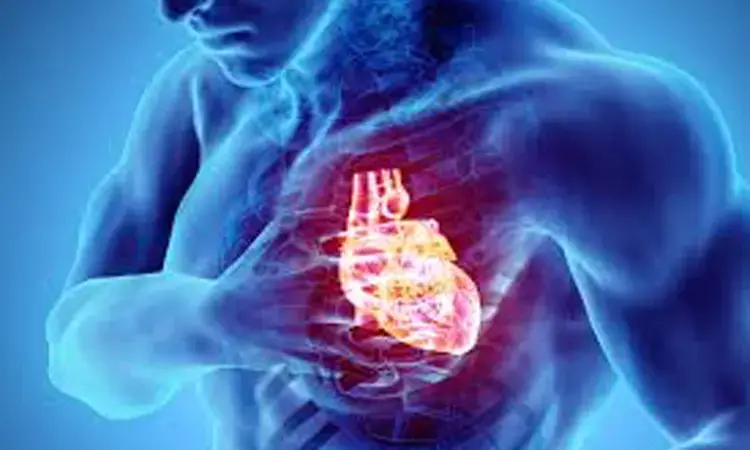- Home
- Medical news & Guidelines
- Anesthesiology
- Cardiology and CTVS
- Critical Care
- Dentistry
- Dermatology
- Diabetes and Endocrinology
- ENT
- Gastroenterology
- Medicine
- Nephrology
- Neurology
- Obstretics-Gynaecology
- Oncology
- Ophthalmology
- Orthopaedics
- Pediatrics-Neonatology
- Psychiatry
- Pulmonology
- Radiology
- Surgery
- Urology
- Laboratory Medicine
- Diet
- Nursing
- Paramedical
- Physiotherapy
- Health news
- Fact Check
- Bone Health Fact Check
- Brain Health Fact Check
- Cancer Related Fact Check
- Child Care Fact Check
- Dental and oral health fact check
- Diabetes and metabolic health fact check
- Diet and Nutrition Fact Check
- Eye and ENT Care Fact Check
- Fitness fact check
- Gut health fact check
- Heart health fact check
- Kidney health fact check
- Medical education fact check
- Men's health fact check
- Respiratory fact check
- Skin and hair care fact check
- Vaccine and Immunization fact check
- Women's health fact check
- AYUSH
- State News
- Andaman and Nicobar Islands
- Andhra Pradesh
- Arunachal Pradesh
- Assam
- Bihar
- Chandigarh
- Chattisgarh
- Dadra and Nagar Haveli
- Daman and Diu
- Delhi
- Goa
- Gujarat
- Haryana
- Himachal Pradesh
- Jammu & Kashmir
- Jharkhand
- Karnataka
- Kerala
- Ladakh
- Lakshadweep
- Madhya Pradesh
- Maharashtra
- Manipur
- Meghalaya
- Mizoram
- Nagaland
- Odisha
- Puducherry
- Punjab
- Rajasthan
- Sikkim
- Tamil Nadu
- Telangana
- Tripura
- Uttar Pradesh
- Uttrakhand
- West Bengal
- Medical Education
- Industry
Upper GIT ischemic injury persists in more than half of patients after out-of-hospital cardiac arrest

France: Upper gastrointestinal tract ischemic injury was present in more than half of the patients successfully resuscitated from out-of-hospital cardiac arrest (OHCA), says a recent study published in the BMC journal Critical Care. The presence of ischemic lesions was shown to be related to the amount of adrenaline used during resuscitation. Also, during the ICU stay, patients with severe lesions had higher organ failure scores and a worse prognosis.
The effect of cardiac arrest (CA) on the gastro-intestinal tract is not well understood. D. Grimaldi, AfterROSC Network Group, Paris, France, and colleagues measured the incidence of ischemic injury in the upper gastrointestinal tract after OHCA and determined risk factors for and consequences of gastrointestinal ischemic injury according to its severity.
For this purpose, the researchers conducted a prospective, non-controlled, multicenter study in nine ICUs in France and Belgium from November 1, 2014, to November 30, 2018. Included patients underwent an esophago-gastro-duodenoscopy 2 to 4 d after OHCA if still intubated and the presence of ischemic lesions of the upper gastrointestinal tract was determined by a gastroenterologist. Lesions were a priori defined as severe if there was ulceration or necrosis and moderate if there was mucosal edema or erythema.
They compared clinical and cardiac arrest characteristics of three patients group (no, moderate, and severe lesions), and using multivariate regression analysis, they identified variables associated with gastrointestinal ischemic injury. They also compared the outcomes (organ failure during ICU stay and neurological status at hospital discharge) of the three groups of patients.
The findings of the study were as follows:
· Among the 214 patients included in the analysis, 121 (57%) had an upper gastrointestinal ischemic lesion, most frequently on the fundus. Ischemic lesions were severe in 55/121 (45%) patients.
· In multivariate regression, higher adrenaline dose during cardiopulmonary resuscitation (OR 1.25 per mg) was independently associated with increased odds of severe upper gastrointestinal ischemic lesions; previous proton pump inhibitor use (OR 0.40) and serum bicarbonate on day 1 (OR 0.89) were associated with lower odds of ischemic lesions.
· Patients with severe lesions had a higher SOFA score during the ICU stay and worse neurological outcomes at hospital discharge.
The researchers wrote, "more than 50% of patients who were successfully resuscitated after OHCA had ischemic injury of the upper GI ischemic tract. Half of these patients had severe lesions (ulcer, necrosis), which were tied to worse organ failure and a decreased probability of survival without neurological sequelae."
"Further studies are needed to better understand the link between GI ischemic injury and outcome after CA," they concluded.
Reference:
Grimaldi, D., Legriel, S., Pichon, N. et al. Ischemic injury of the upper gastrointestinal tract after out-of-hospital cardiac arrest: a prospective, multicenter study. Crit Care 26, 59 (2022). https://doi.org/10.1186/s13054-022-03939-9
Dr Kamal Kant Kohli-MBBS, DTCD- a chest specialist with more than 30 years of practice and a flair for writing clinical articles, Dr Kamal Kant Kohli joined Medical Dialogues as a Chief Editor of Medical News. Besides writing articles, as an editor, he proofreads and verifies all the medical content published on Medical Dialogues including those coming from journals, studies,medical conferences,guidelines etc. Email: drkohli@medicaldialogues.in. Contact no. 011-43720751


